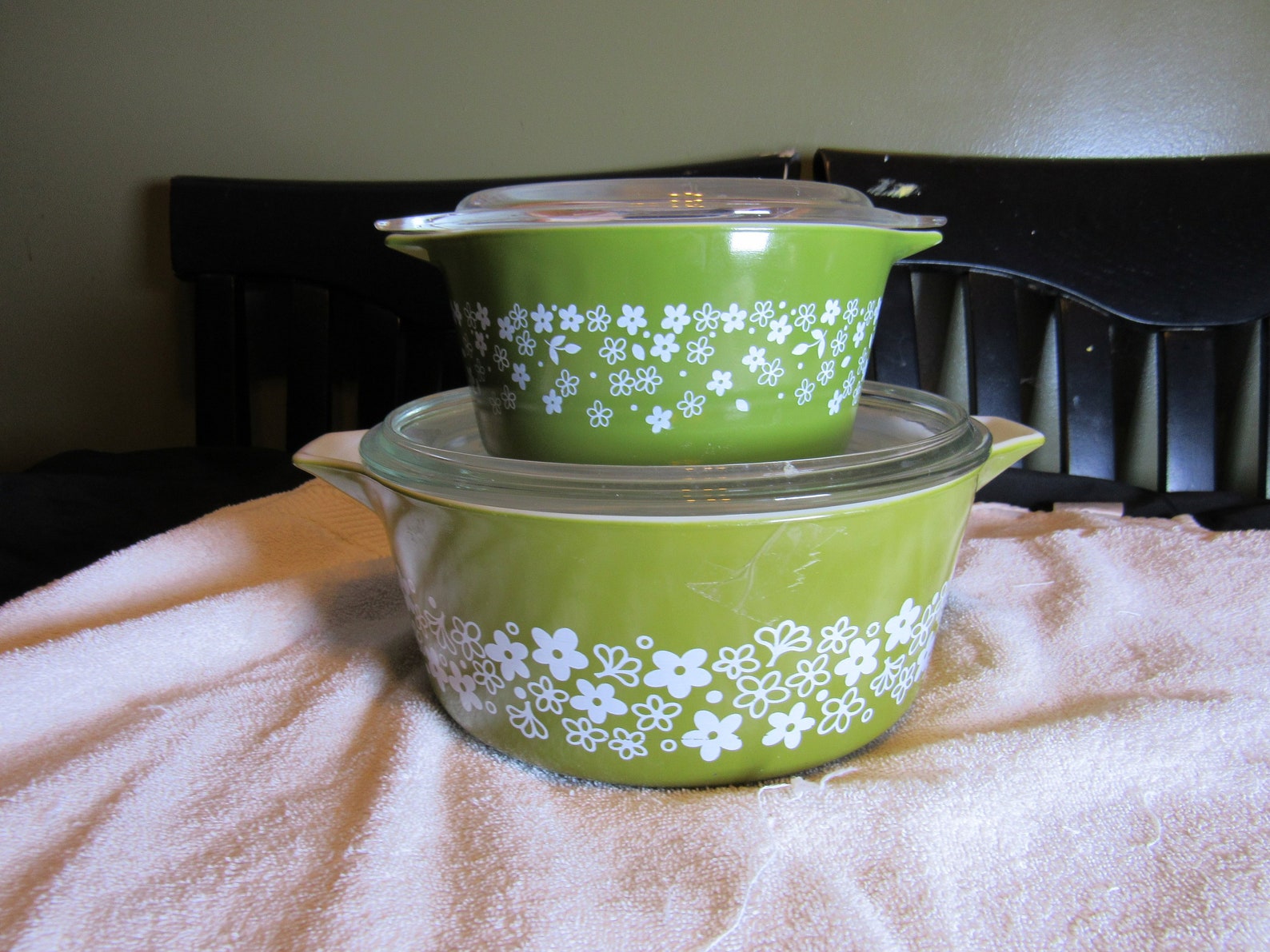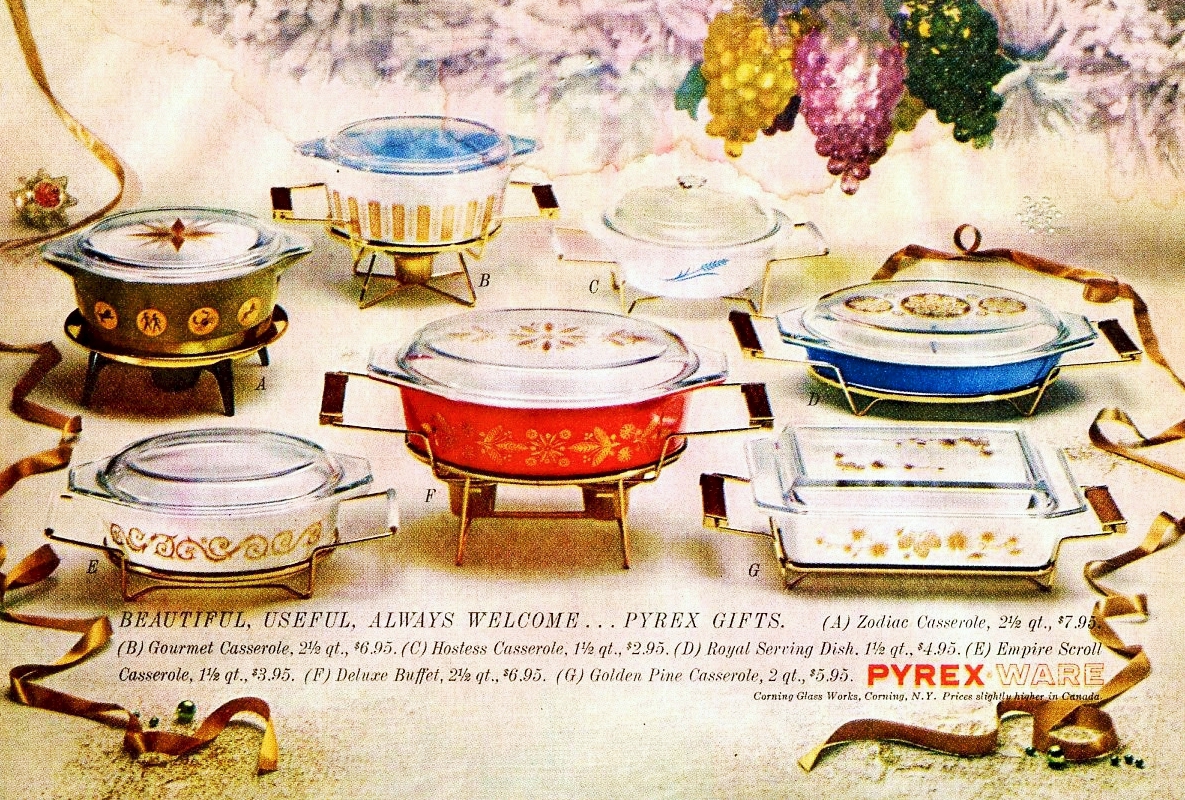
A standard pattern casserole accessorized with a cradle or oven mitt.Many were prominently labeled "Special Value", while others were seen packed in generic cartons. Some may have been confined to a market channel or offered through a stamp redemption program. Unlike seasonal non-standard promos, specials typically did not appear in dated catalogs. While technically promotional, they consisted largely of standard items packaged in novel ways, and also offered for a limited time. Over the years, various "special" items were offered. Related: Browse seasonal promotional patterns by thumbnail image.


Many were packaged with an accessory, including:.Although usually confined to just a single size and color lid or bowl, a decorative pattern was sometimes offered in a color variant on other dishes.Patterns on promotional items typically did not also appear in standard pattern collections.Production costs were higher than for single color decoration, since each color was applied in a separate pass. Multi-color decoration was also found more often on promotional pieces than it was on Standard patterns. Gold leaf decoration on Pyrex was discontinued in the early 1970s due to incompatibilty with microwave ovens. Lids decorated with it typically show wear from stacking or usage as trivets. Although not true of lids, the gold decoration is always seen applied over a fired-on base color. Advertised as "22K gold", it lent an upscale air. The use of gold leaf decoration was, with few exceptions, confined mainly to promotional pieces, and was seen on both dishes and lids. To distinguish them from Standard patterns, promotional pieces are often referred to as "Non-Standard" patterns. All are things collectors need to consider when assessing value.īut, even without its original lid, trivet, or box, an extremely rare 1959 promotional "Lucky In Love" 1 quart Cinderella round casserole actually sold for over $4000.00 on eBay in 2015. More often than not, the box is (expectedly) long gone, the cradle or trivet has gone astray or is non-original, and the original lid is either missing or replaced by a generic one.

Promotional pieces in their original, complete state are among the most difficult to acquire, and usually among the most expensive as collectibles. These included a few selections available year-round, in some cases for more than a year, and which were listed in the regular semi-annual dealer catalogs in a "Gifts" section. In later years, promotionals were offered as parts of special "collections", such as "Designer" or "Hospitality". Often, the price was placed on a perforated tab which could be removed without damaging the carton, allowing a measure of discretion by Pyrex gift-givers.

They are why you will see prices imprinted on the cartons in which Pyrex and other products were packaged. Size and model of dish or bowl, level of decoration, and functionality of the included accessory all factored into product cost, and, therefore, the price.įair trade laws, in force for much of the mid-20th century, allowed manufacturers to set retail prices on their goods. New promotionals were released in groups spanning a range of price points, in order to accommodate gift-buying consumers' budgets. Dated local newspaper advertising, however, shows that promos were apparently offered as much as a year or more beyond their initial introduction. To emphasize the "limited time only" nature of the items, dealers were requested to remove any remaining unsold units from their sales floors at the end of each promotional period. Designs offered at each time of year were matched to appeal to those respective buyers, and changed over the years to reflect the tastes of the times. Initially, seasonal promotional items were typically released twice yearly: in the fall to coincide with holiday shopping, and in the spring for Mother's Day or wedding gift giving. Otherwise common casseroles became "deluxe" when offered in an unusual decoration or with a metal holder to turn them into buffet or snack servers. Originally marketed with an eye toward gift giving and only offered for a limited time, most were in the form of a single dish with a cover, in a unique color or pattern, and often including an accessory such as a trivet or candle warmer cradle.Ĭorning marketing and product development departments were quite inventive in using standard shapes and sizes of dishes to create new products each season. In addition to the roughly two dozen standard Pyrex color opalware pattern collections produced for various lengths of time over the decades were what are termed promotional pieces.


 0 kommentar(er)
0 kommentar(er)
